Pre-Requisites
For sending notifications through Slack, you’ll need to create a Slack App. This App will basically be responsible for sending notifications to users / channels in their Slack workspace. To create Slack App, you’ll need a Slack account and a Slack workspace where you’ll be configuring the App. You will also need permission to create a Slack app. If you do not have access already, you can create your own free Slack workspace.What all is covered here?
In this documentation, we’ll create an app to send direct messages to users or channels in a slack workspace. Here’s an overview of the steps required to integrate and send messages to a slack workspace:- Enable Slack Channel on SuprSend Platform
- Create Slack App- You’ll use this app to send direct messages to a user or channel
- Building OAuth flow to get the user permission and access token to send them notifications. This information will be stored as user’s slack channel information. Unlike email where if you know user’s email id, you can send email to that user. In case of Slack, your users have to authenticate and allow your app to send them notifications on Slack.
- Update slack channel information in user or channel profile to send message
- Create a Slack template and trigger workflow
Enable Slack channel on SuprSend vendor page
Go to SuprSend dashboard -> Slack Vendor Settings page. Enable Slack channel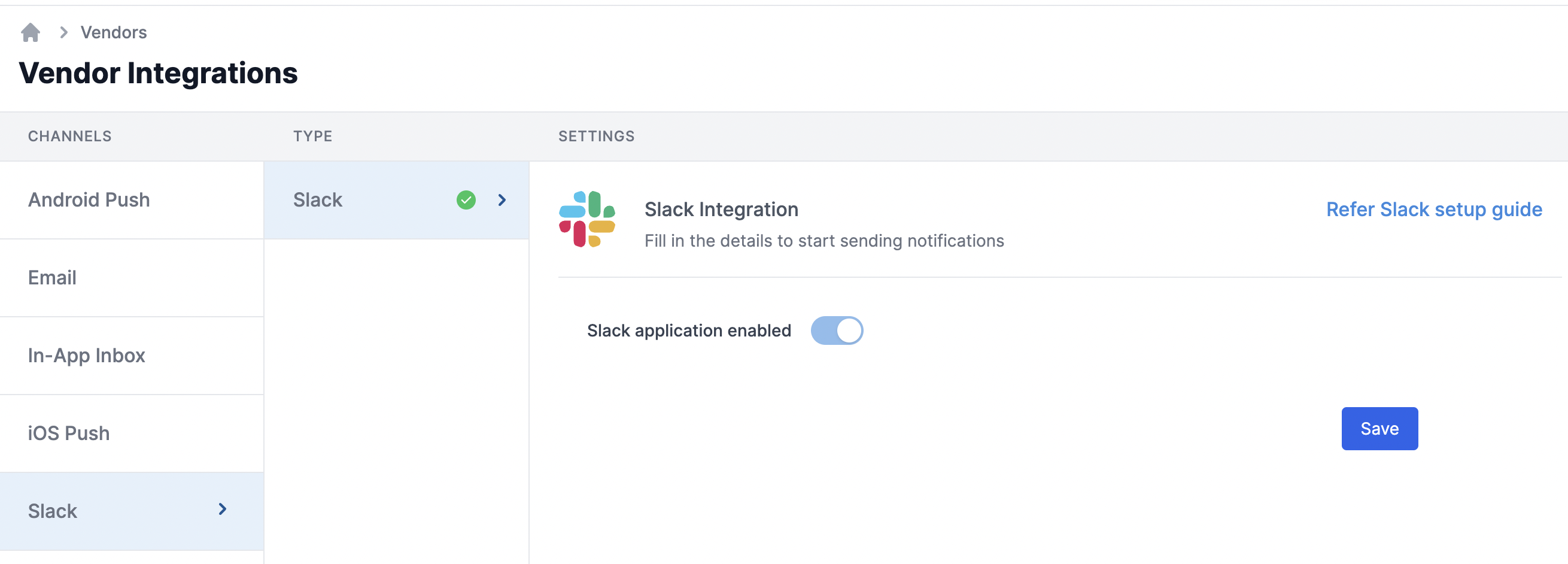
Create Slack app
You’ll need to create a Slack app and assign required OAuth Scopes to that App to send notifications via SuprSend. If you have an existing Slack app, you can directly go to OAuth Scopes.1
Sign in to Slack.
Navigate to Apps page and click on “Create New App” button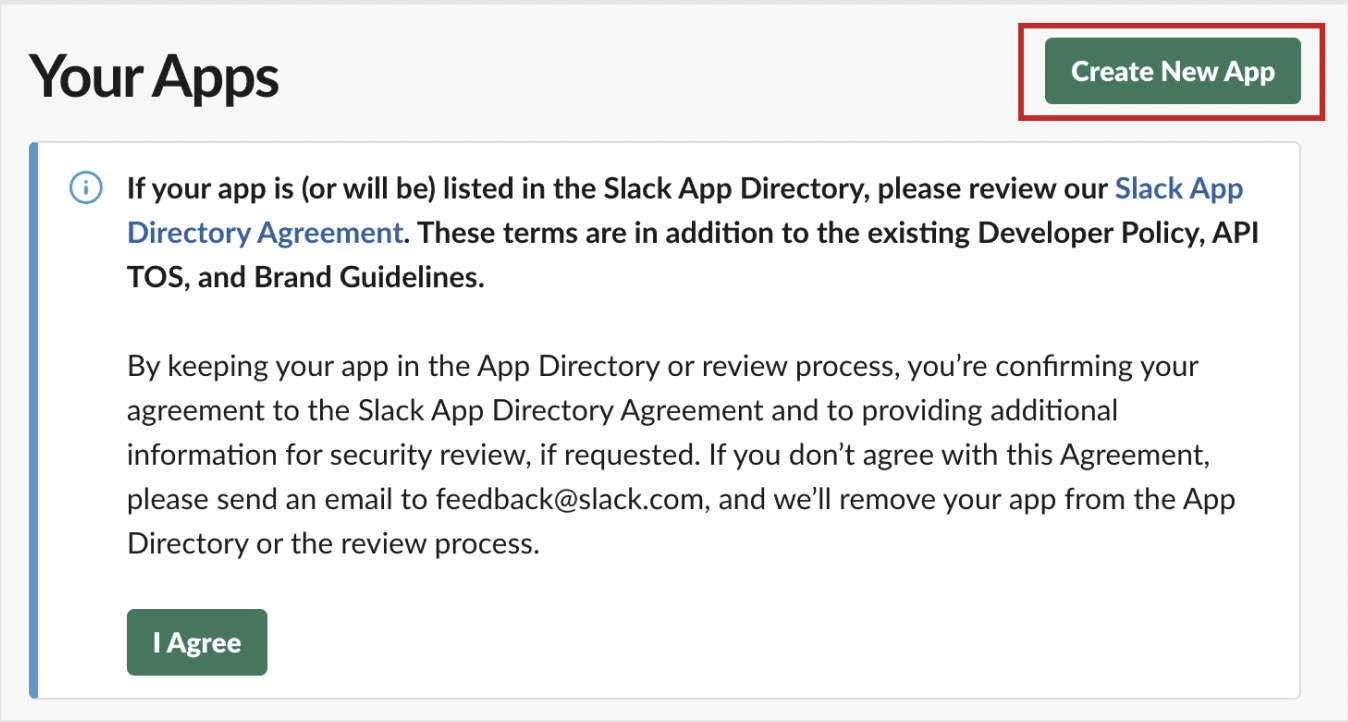

2
Select Create an App "From scratch"
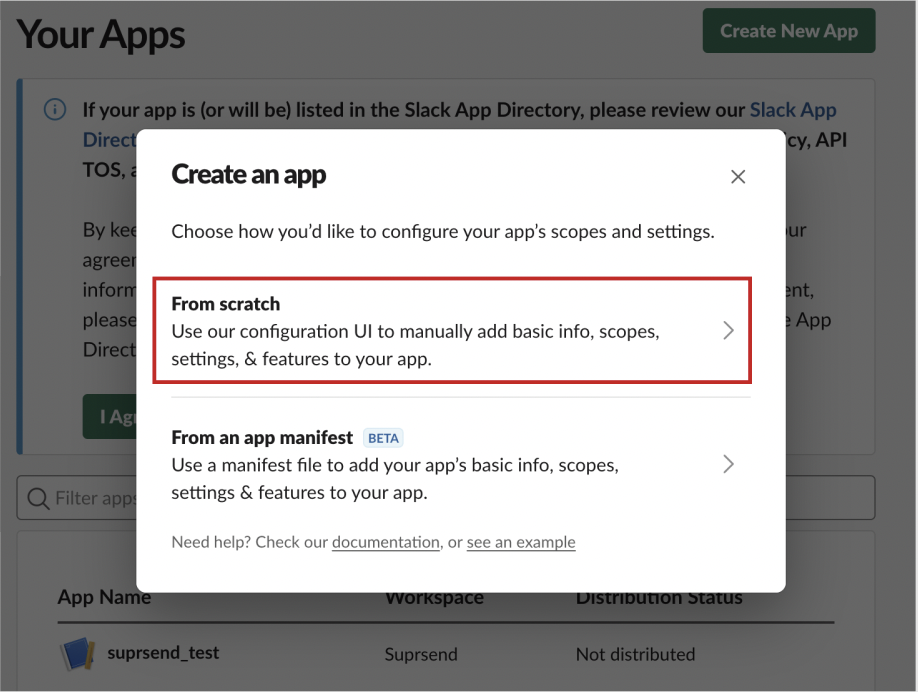
3
Give your App a suitable name
Give your App a suitable name and select the workspace you will be using to develop this app. For your test app, you can use something like “SuprSend Test App” for app name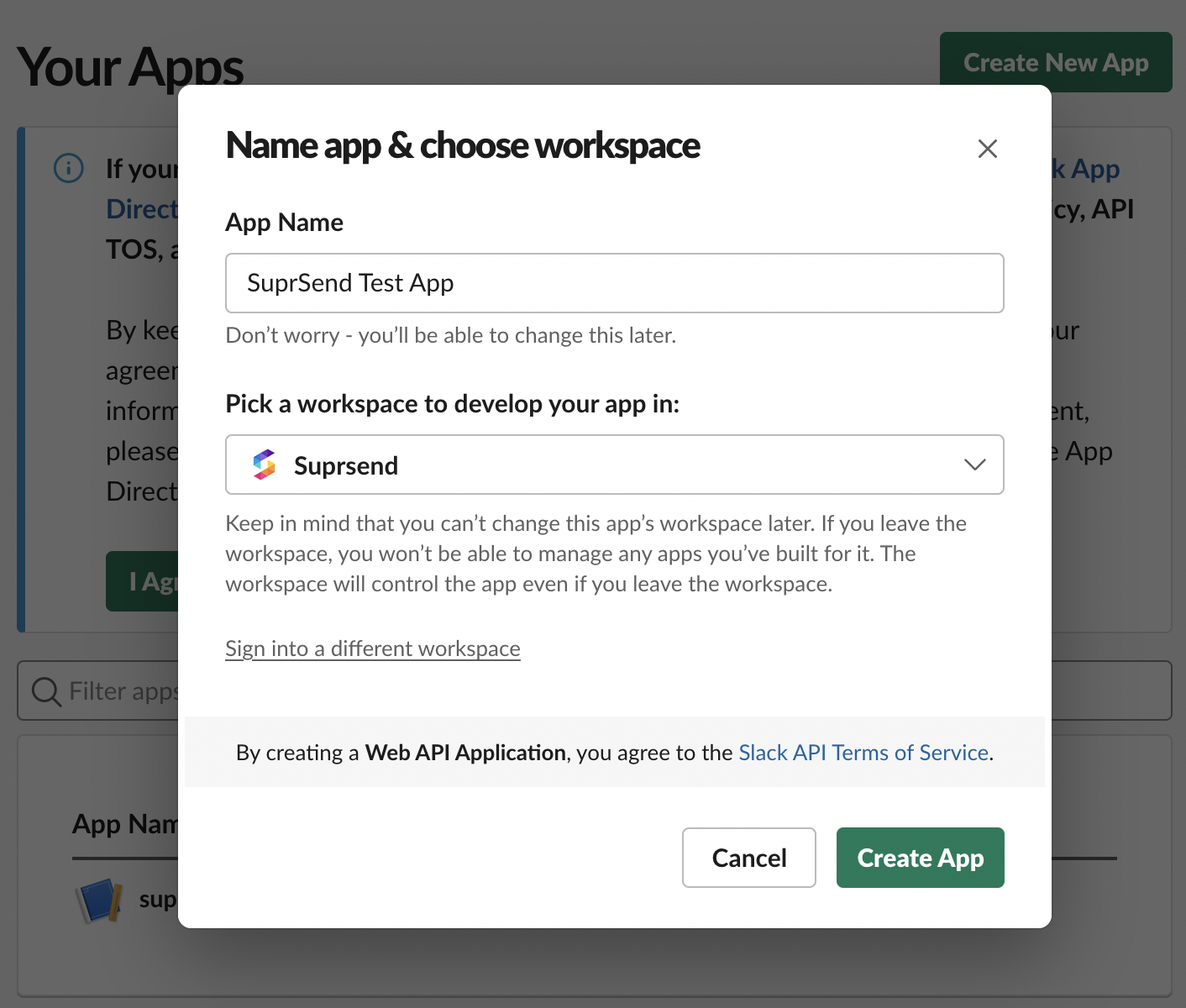

4
Assign OAuth Scopes to App
OAuth is a protocol that lets your app request authorization to private details in a user’s Slack account without getting their password. It’s also the vehicle by which Slack apps are installed on a team. You can authorize your app using one of the below methods:
Give scoped access using OAuth V2 method
Give scoped access using OAuth V2 method
OAuth V2 method. Whenever a user joins a slack workspace or adds your slack app in their existing workspace, your app asks for specific permission scopes and is rewarded with access upon a user’s approval.
Navigate to “Features” -> “OAuth & Permissions” page from the left sidebar menu. Scroll down to the Scopes section and add the above scopes as Bot Token Scopes.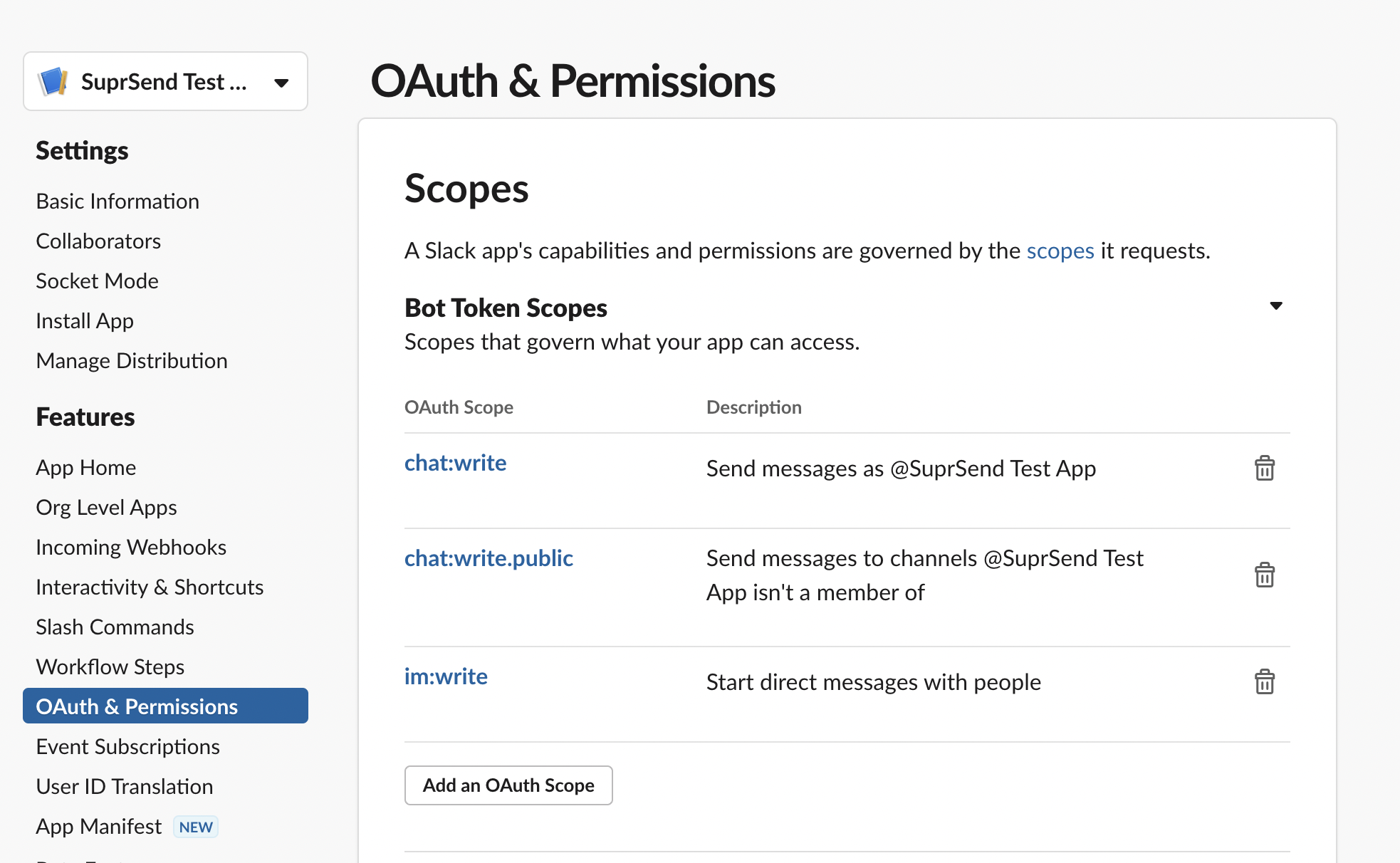

- You give a button somewhere on your product to add slack channel. The easiest way to enable workspaces to install your app is with the Add to Slack button. Another way is to give the option to Sign in with Slack in your onboarding flow (which is not very common)
- This will redirect the user to an authorization link. Refer OAuth V2 documentation to add slack authorization flow in your product.
- The user will be asked to give permissions to access their profile information based on the scopes that you define in the OAuth & Permissions sidebar of your app management page.
| scope | obligation | description | |
|---|---|---|---|
chat:write | mandatory | Post messages in approved channels & conversations. At a minimum your app needs this scope to send notifications to a Slack workspace. | |
im:write | mandatory | Send direct messages to users in Slack | |
chat:write.public | mandatory | Send messages to public channels your Slack app isn’t a member of. If your app doesn’t have this scope, you’ll need to use the conversations.joins method to join a public channel before sending it messages. | |
users:read | optional | To send DM to user’s DM | |
users:read.email | optional | To send DM to user using their email id |

Give access to a particular channel / user using incoming webhook
Give access to a particular channel / user using incoming webhook
Incoming Webhook Method:Another way to send slack message is using incoming webhooks. Incoming webhook is a quick and easy way to send message to a particular channel. During the OAuth flow that uses 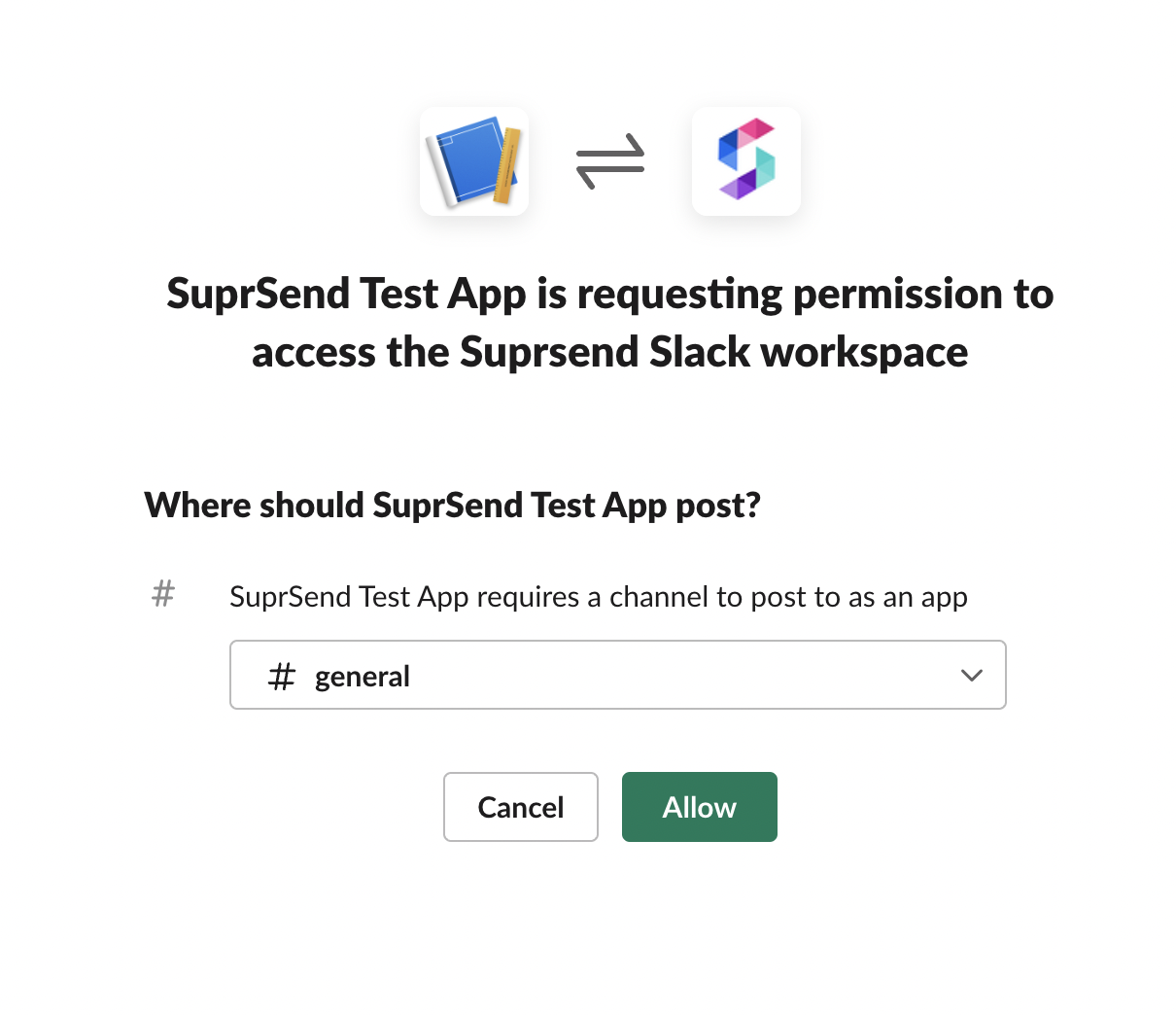

incoming_webhook scope, your user can connect to a particular channel (public, private, or even the direct message channel for that individual user) they have access to in their Slack workspace.
-
Sending announcements and product updates in
#announcementchannel. - Setting up an internal channel to send a message in case of anomaly detection in a product.

Update Slack channel in user / object profile
The information required in the user profile is dependent on the type of message you are sending.Sending a direct message
Sending a direct message
To send a direct message to a user, you’ll need to add the slack
user_id or email along with bot access token in user profile. You can pass this information in a json format using user.add_slack method as below:Sending to a channel
Sending to a channel
To send a message to a public or private channel, you’ll need to pass its channel_id along with access token. You can get channel_id by opening slack in a browser, select the desired channel and copy the channel_id from the URL

distinct_id as channel_<channel_name> so it’s easy for you to remember and pass in your workflow calls whenever you want to send message on a slack channel.Refer below example to add slack channel shown in above screenshotSending message using incoming webhook
Sending message using incoming webhook
To send a direct message using incoming webhook, just pass the webhook URL in user profile. You can pass this information in a json format using
user.add_slack method as below:Order of precedence
The Slack profile should only containincoming_webhook->url, or the access_token with one of these keys: channel_id, user_id, or email. If there are multiple keys in user.add_slack() call, the order of precedence is as follows:
incoming_webhook->url > channel_id > user_id > email. e.g., if your add_slack argument is as follows:
{"incoming_webhook": { "url": "https://hooks.slack.com/services/TXXXX/BXXXX/XXXXXXX" } }
